by Nick Drew | Mon 29 Jun 2020
LM-Suominen Oy Rock on in Rauma
Finnish Contractor LM-Suominen Oy has been excavating a large area of rock in Rauma for more than a year. A total of 600,000 cubic metres will be removed and processed during the course of the project which will eventually be home to one of the most modern large-scale sawmills in Finland.
At the beginning of February, two-thirds of the material had already been excavated. Crushed stone produced in the area has been shipped from a nearby port to Estonia and now LM-Suominen is also transporting the rock to Rauma's Ulko-Petäjä (Petäjäs 4 project), where Terramare is expanding the port's land facilities by six hectares into the sea. This is also a very significant large-scale excavation contract.
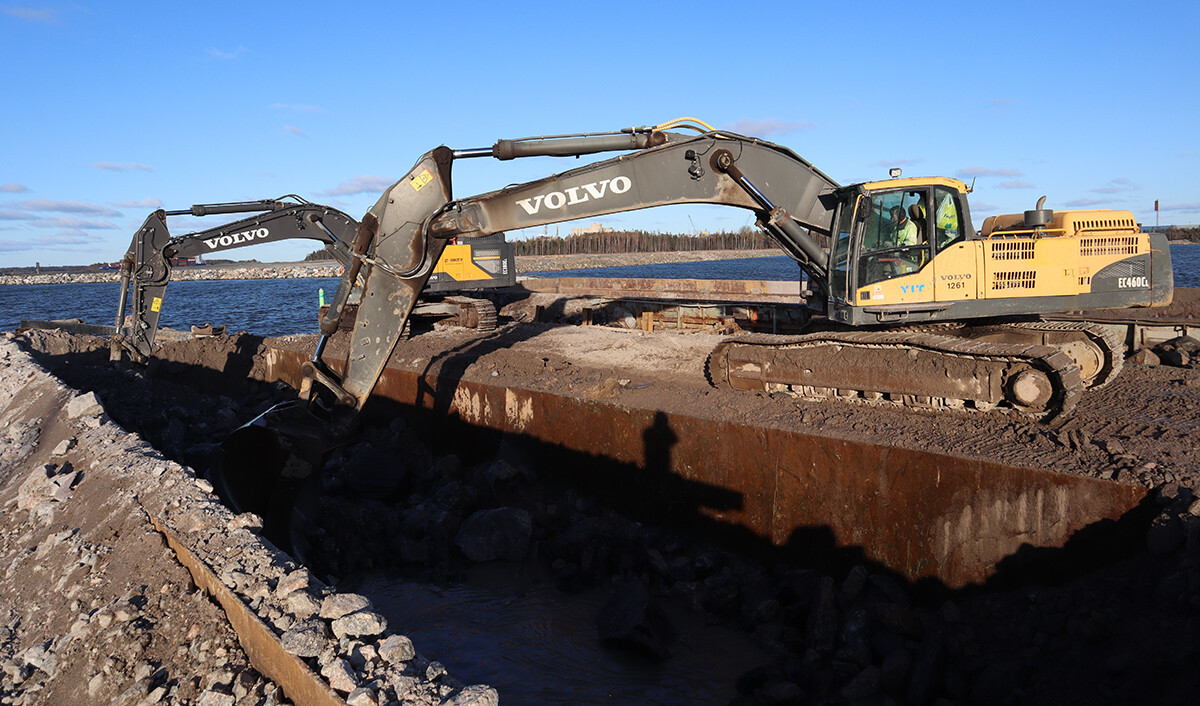
The entire excavated area covers around 15 hectares in size. The contract began in November 2018 with surface cleaning and the actual excavation was started in January last year. The first rocks were fed into the crushers shortly after excavation began.
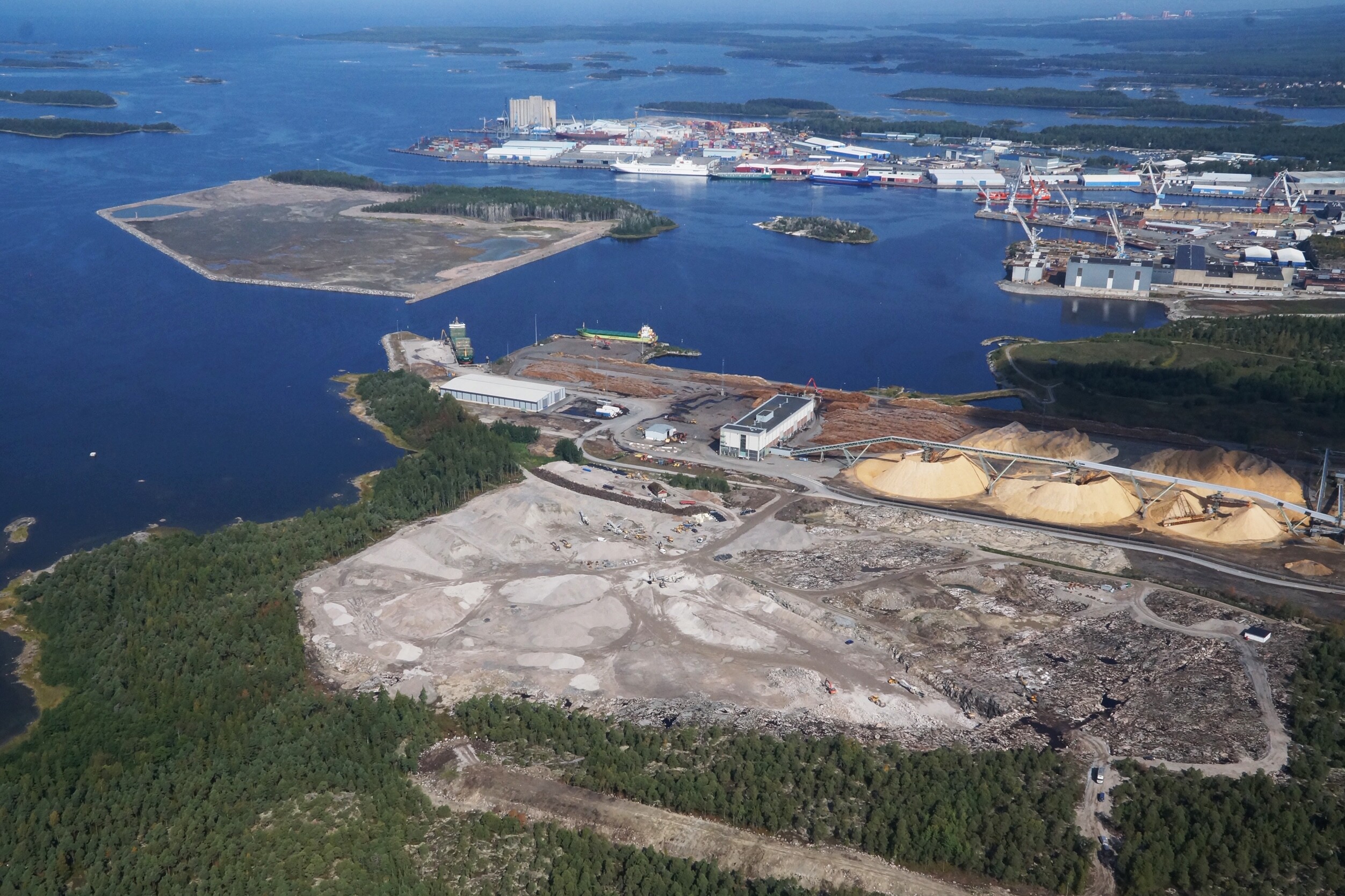
At the beginning of February, 450,000 cubic metres were excavated, leaving about 150,000 to be removed over the coming months.
The whole area is divided into two sections, as the overflow pipe of the city's wastewater treatment plant runs right through the middle of the area, the rock adjacent to the pipe has not yet been excavated.
To facilitate this LM-Suominen is currently constructing a diversion pipeline around the excavation area. The 1.3-kilometer-long trench will be dug to a depth of nine metres.
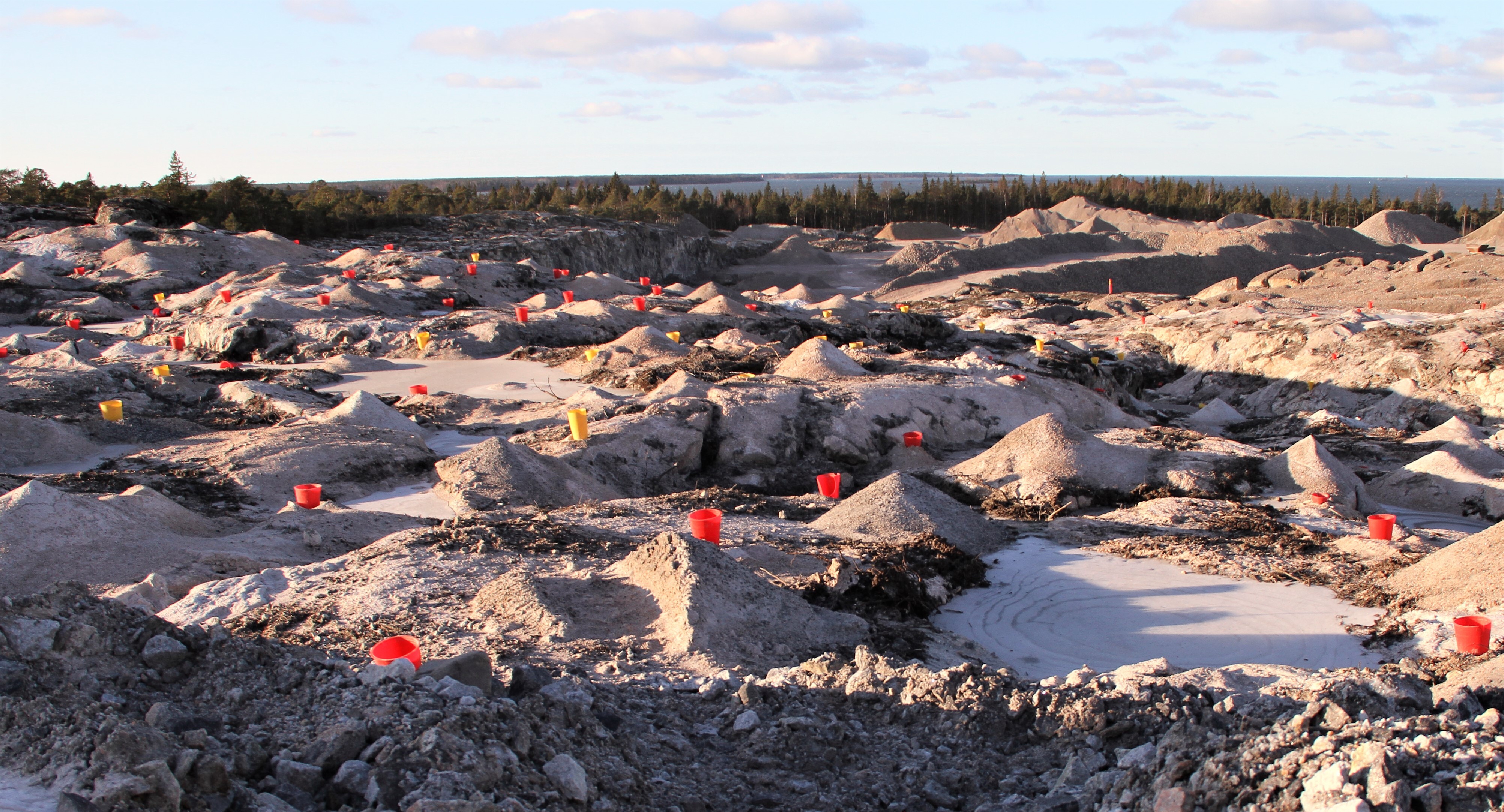
Talking about this job Markku Suominen CEO of LM-Suominen Oy said, “When I made an offer for this excavation job, many thought I was a little crazy. There would be so much stone generated from the area that if all the material generated were to be sold to the into the Rauma economic area alone, it would probably have been enough to last for five years! At the time, during the beginning of the job, there was no information about the large amount of quarries that would be ingested by the Petäjäs 4 project.
“Ships that leave their cargo here, then head for the wharf in Estonia, where I knew there was a market for different types of crushed stone. After all, we also export a lot of aggregates to Sweden and even Norway. Shipping to Estonia has played a big role in the whole project. Thanks to that, we have not swamped the crushed stone markets in Western Finland”.

Suominen, who is the chairman of the Finnish Association of Machine Entrepreneurs, has grown an extensive network of acquaintances, through which contacts were also found in Estonia. The builder thus also became an export entrepreneur.
“Estonian trade was a win-win situation for all parties. The ships received 4,000-6,000 tonnes of crushed stone on their return cargo and sometimes the aggregate even went to the same port where the new timber load was first dispatched. For Mantsinen, who work in the port, loading the ship with crushed stone also brought desired additional work. The target ports in Estonia are Muuga, Bekkeri, Pärnu and Paldiski. Now that the expansion of the port is absorbing the quarry, the shipment of crushed stone to Estonia has decreased”, concludes Suominen
There was a lot to consider with regards to the massive excavation contract. The sizing of the machinery, both in terms of size and quantity, was something that Suominen, who has been in the construction industry for a long time, had not previously had to think about on such a scale. The loading and transportation of a huge amount of rock was also challenging to arrange as efficiently as possible.
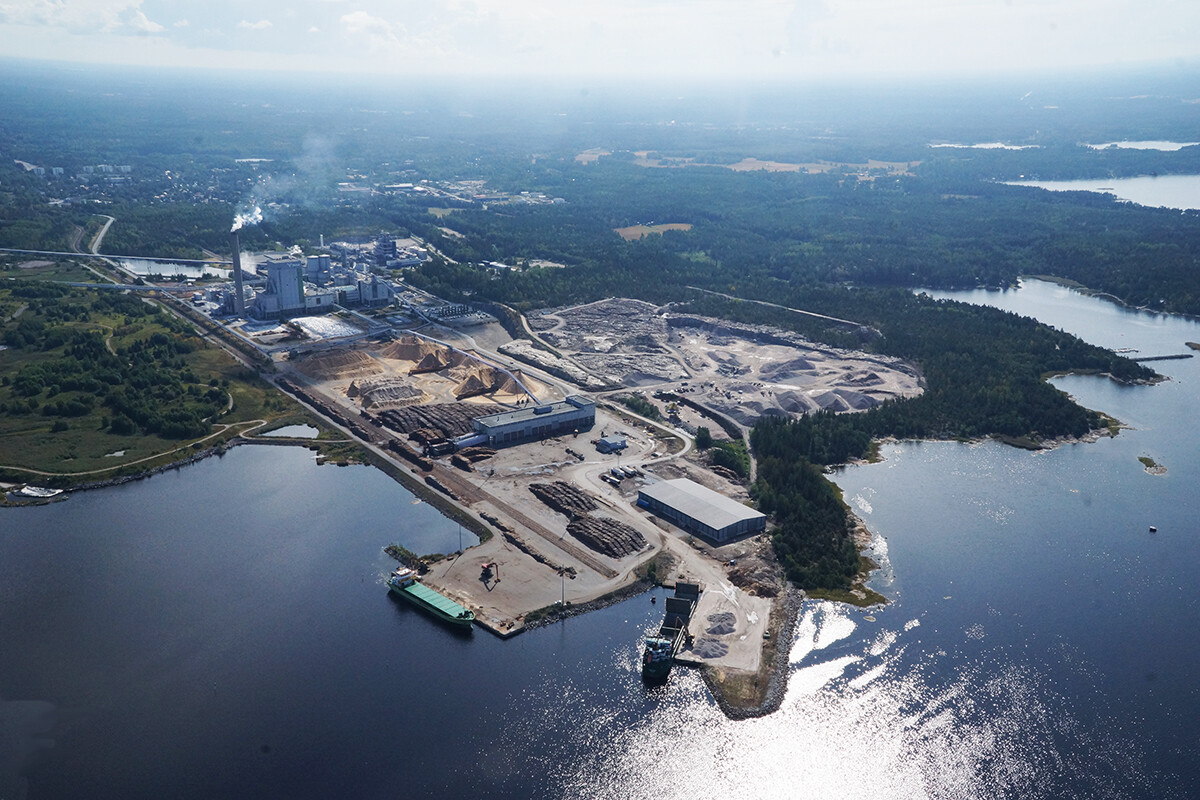
The land reclamation of the Port of Petäjäis happened at a good time, at a depth of 28 meters, a total of 820,000 cubic meters of stone was needed.
Two barges travel by sea and a large fleet of vehicles take about 100 quarry loads a day by road. There is also one five-axle button truck charting stone to and from the unloading site of the 17-mile trip. The round trip takes almost an hour.
Suominen said, “When it became clear that the Petäjäs 4 project was swallowing a huge amount of quarry stone, it was decided to carry out the transport by sea with two contract barges from the main contractor Terramare and a large fleet of vehicles along the land. The best way to load the barges had to be considered. Of course, loading rubble dumped from dump trucks on the ground was not so effective in terms of productivity. So we effectively built a holding pit in the ground for loading, from which it is easy to get full buckets quickly and efficiently. Loading on barges takes place with two, 46 and 38 tonne, Volvo excavators”.
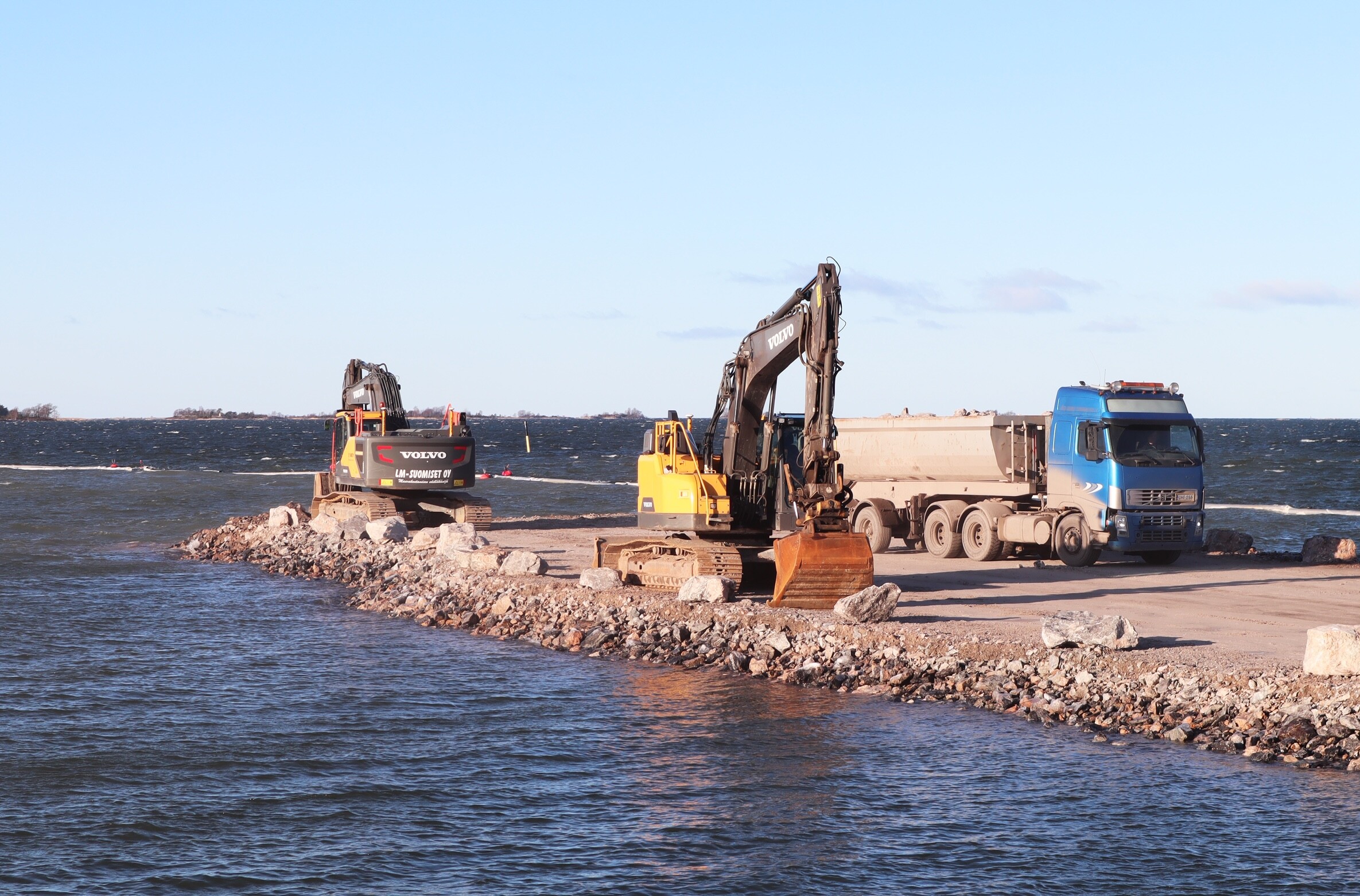
Terramare’s guys estimated before starting the project that it would take three hours to load one barge carrying 800 tons. However, with LM-Suominen's two loaders, the time is compressed to 40 minutes. Depending on the wind, a distance of about 1.5 km from the loading place to the unloading takes 45-60 minutes on one barge, so the loading time is well balanced. At best, the two excavators are capable of loading at a speed of about 1,000 tons per hour.
Mooring and securing an empty barge from a tug operator next to a full one is a masterpiece in itself. Another excavator grabs the empty barge and the tug then pulls the full one out in between. The changeover of barges is smooth and the excavators can quickly start the new load. The waterline of a full barge would appear to be at least a meter and a half lower than an empty one. The tug pulls its heavy cargo to Petäjä and the rock is emptied at the unloading site directly from the barge to the sea.
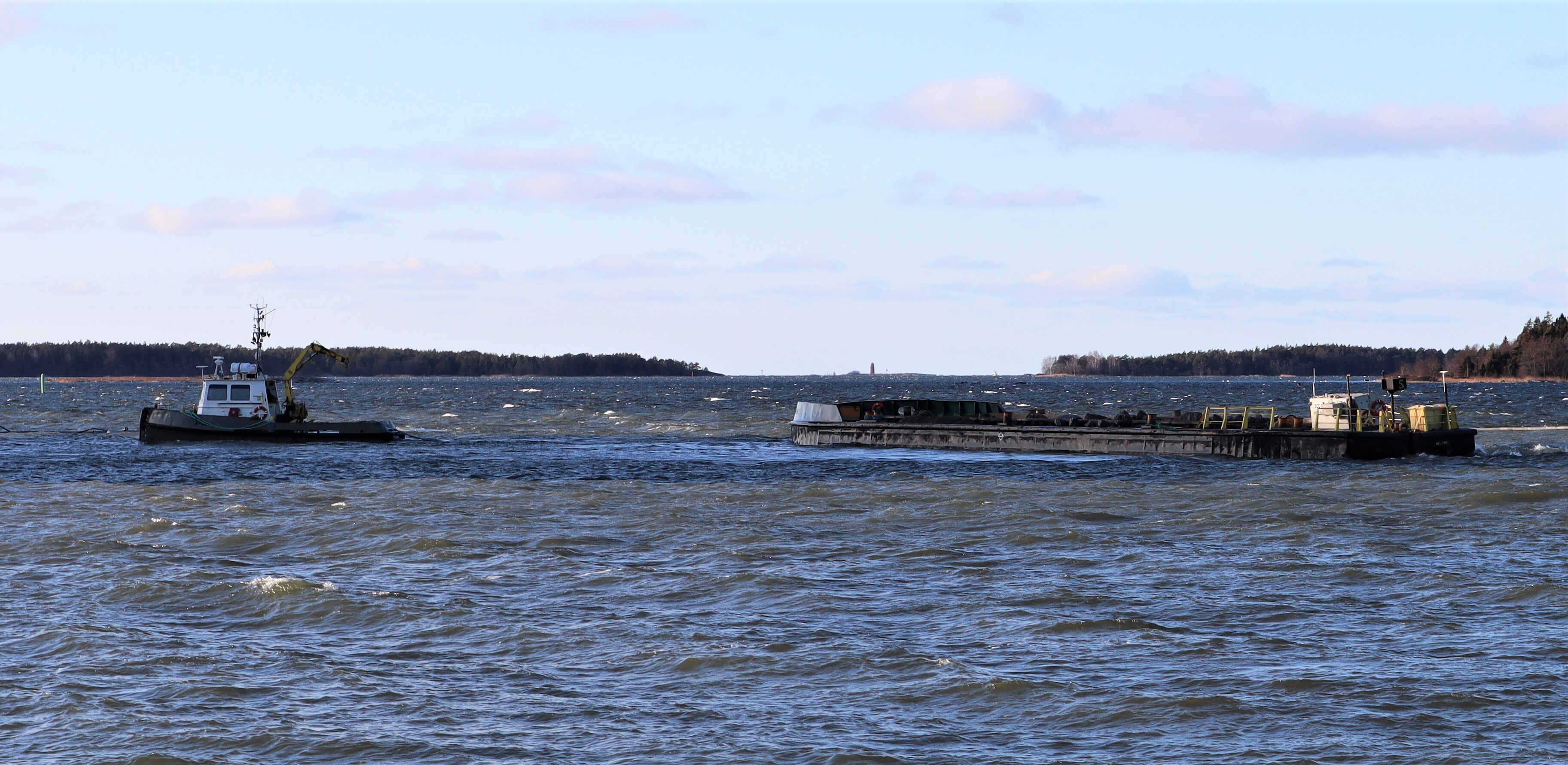
"According to Terramare, skilled tug drivers are scarce in this country," Suominen knows. And it’s easy to understand when you look at how smoothly and accurately a heavy barge obeys the tug’s timely movements.
The discharge in the harbour is quite smooth, although winds can produce some choppy waves at times. The filling of the seabed will be done according to the preliminary plan. The bench has two LM-Suominen Volvo excavators accepting truck loads.
Barges carry about 8,000 to 9,000 tons of quarry per day. The trucks carry 3,500 tons and even 3,000 tons of rock can pass through the crushers in one shift on a daily basis. It makes a total of about 15,000 tons per day. You can work in the area from morning to evening, but crushing operations must not begin until seven.
Machines of Choice
Suominen, Markku and his brother Ilkka are Volvo men. It becomes very evident on every corner of the jobsite when you see a fleet of around 20 Volvo Construction Equipment machines at work.
Volvo dump trucks feeding the barges and the road going fleet are loaded in parallel by two Volvo excavators. The smaller is the EC380EL (37.8–43 t / 226 kW) and the larger is the company's recent acquisition in December 2019, the EC750EL (73.5–75.3 t / 385 kW).
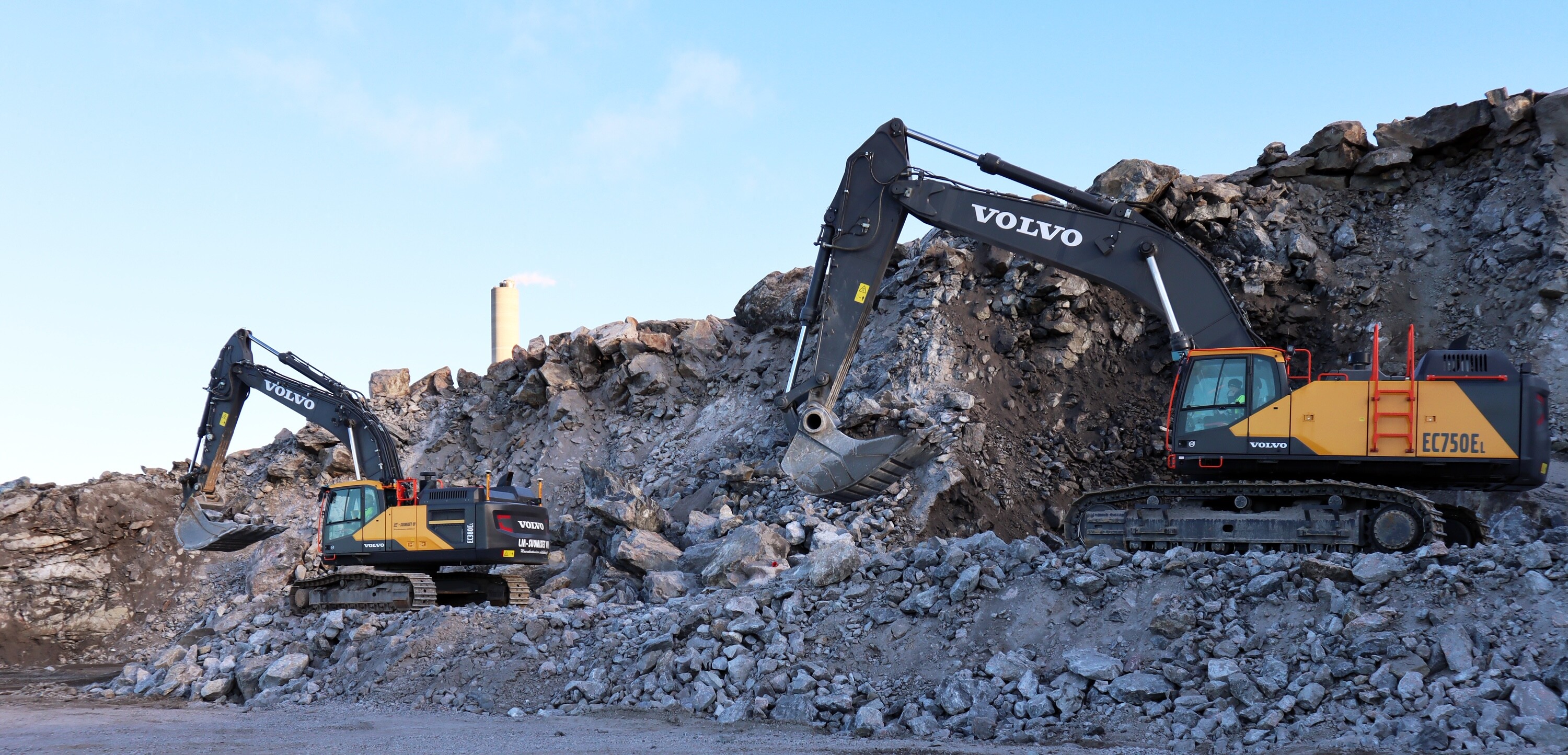
“At first, we thought we’d put a 75-tonne excavator to load the barges, but then we realized that power is needed to load trucks when there are so many vehicles. So, another EC380 was assigned for loading the barges as well as its larger brother the EC460. They perform well, and with two loading machines, the waiting times for the transport is kept to a minimum”.
“I wanted the longest possible dipper arm for the EC750 and a bucket bigger than recommended, which was also supplied by Volvo too. Volvo were concerned about the size of the bucket and the long dipper arm combination, but agreed. The volume of our bucket is 4.8 cubic meters, while the recommendation is 4.2., however, our solution has proved its worth. The extra dimension is by no means a disadvantage when loading, and the increased weight at the end of the boom does not make the machine unstable, it remains stable throughout the working range. The drivers have been very satisfied”, says Suominen.
Operational reliability with maintenance contracts
The 75-tonne will load 2.5 semi-trailer trucks in around the same time as the smaller 380 one equipped with a 2.2 cubic meter bucket. One full bucket of the EC750 weighs about seven tonnes, so three buckets are needed for the 50-tonne truck combination knob and four for the dumptruck. The 40-ton Volvo A40 dump truck is filled with five buckets and the A30 (30 t) smaller than a notch with four buckets.
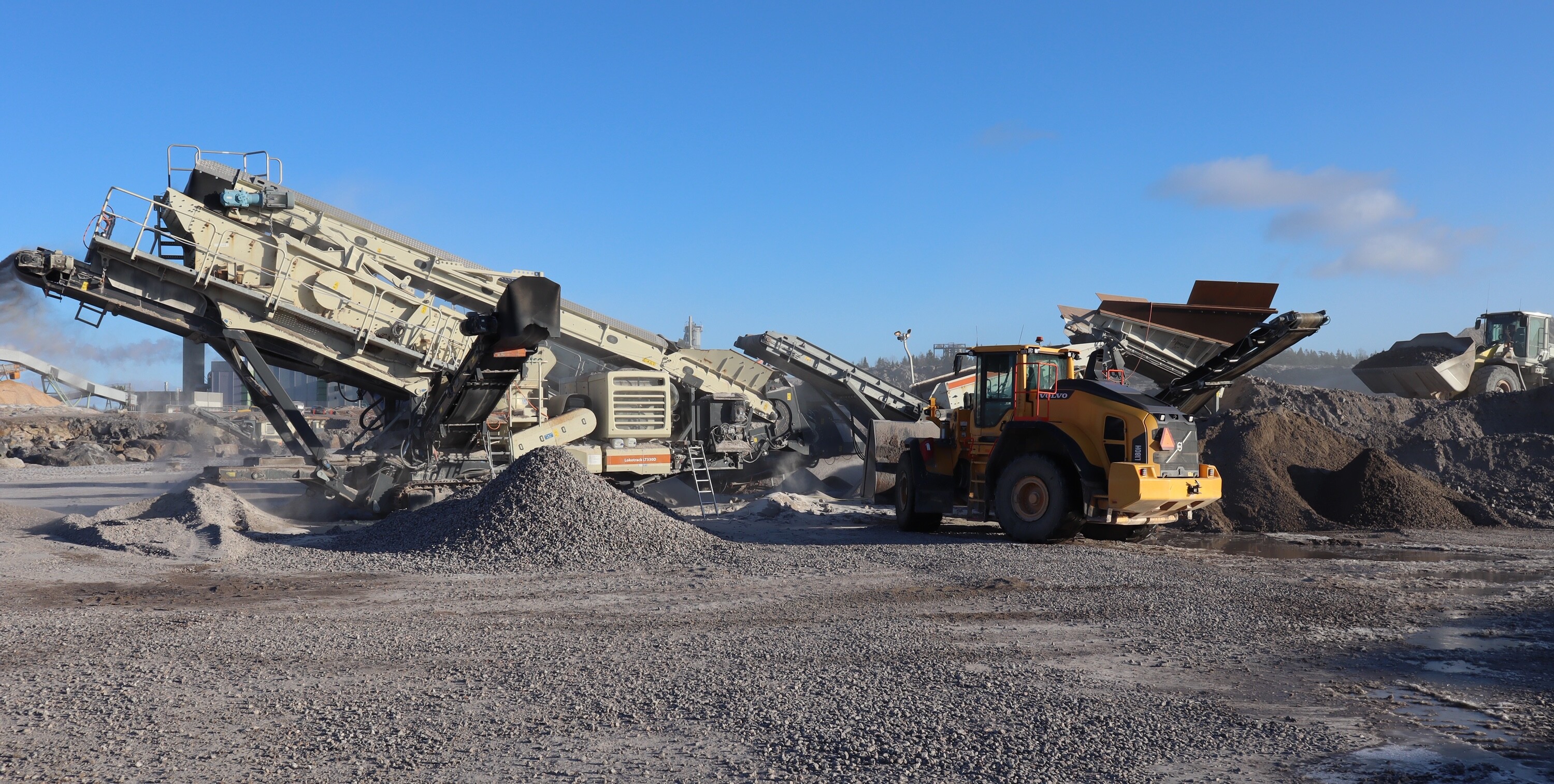
The Volvos are loading the rock from a high, loading plinth with large boulders on the deck. Safety has been maintained so that there is a “moat” between the wall and the loading site, where any stones that roll off will remain.
“The machines are working hard on this project and it’s tough going as well, we recently noted that maintenance can easily be missed by our own team, or at least postponed when we don’t have suitable time. So, all our machines today have maintenance contracts. Our Volvo installers do the maintenance on time and in addition we then do the major renovations at our own workshop. This has proven to be a good system” explains Suominen.
Checkout this video from Koneporssi which gives a great visual look at the scale of this vast project, commentary is in Finnish but the footage tells a great story.
The Digger Man Blog thanks our friend Olli Päiviö, of Koneporrsi magazine for this story and associated photos.